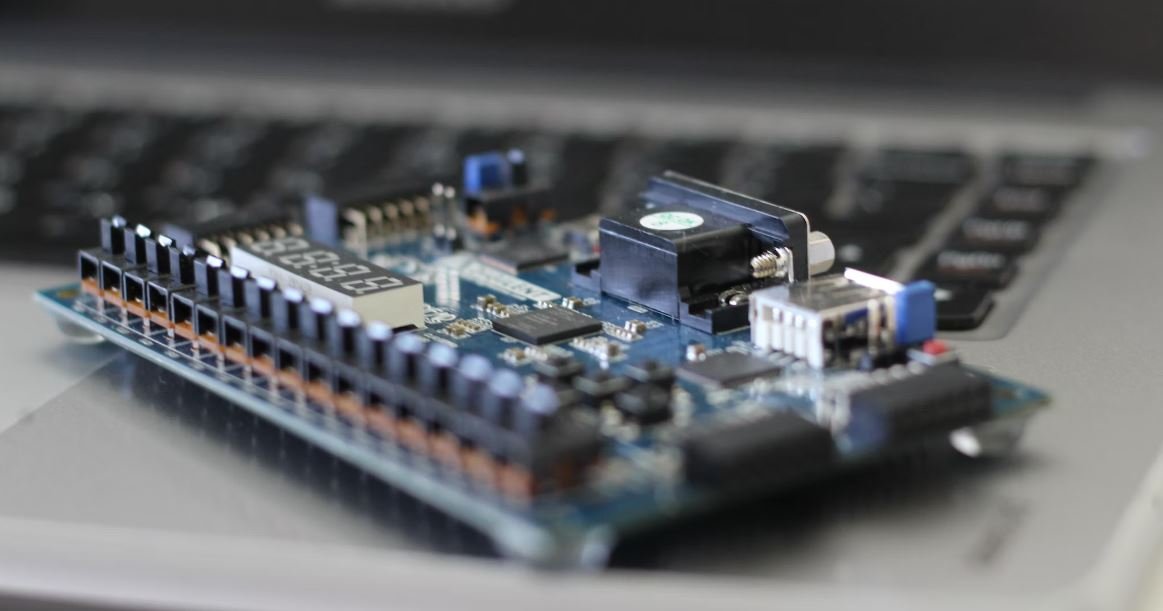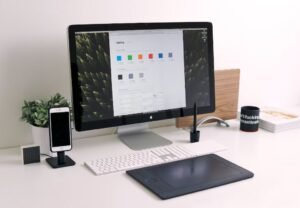Which Apps Use the Most Data on iPhone
Do you find yourself frequently exceeding your monthly data limit on your iPhone? Understanding which apps consume the most data can help you manage your usage effectively. This article explores various apps and their data consumption, empowering you to make informed decisions about your data usage.
Key Takeaways
- Identifying data-intensive apps allows for better data management.
- Social media and streaming apps are often significant data users.
- Implementing data-saving features can help reduce data consumption.
Understanding Data Consumption
When it comes to data usage on your iPhone, certain apps consume significantly more data than others. **Video streaming apps**, such as Netflix and YouTube, are notorious for their **high data consumption**—streaming content in high definition can consume several gigabytes of data per hour *without proper settings optimization*. Similarly, **music streaming apps**, like Spotify and Apple Music, can consume a considerable amount of data if you frequently stream songs, especially if you are not connected to a Wi-Fi network.
Identifying Data-Intensive Apps
To understand which apps use the most data on your iPhone, you can utilize built-in iOS features like the **Settings app**. Go to **Settings > Cellular > Cellular Data Usage**, where you will find a list of apps and the amount of data each has consumed. Moreover, you can also check the **Battery section** to identify apps that consume data even when you are not actively using them.
Data-Saving Measures
Once you have identified the apps that consume the most data, you can take several steps to minimize their impact on your iPhone’s data usage. Some popular **data-saving measures** include:
- Limiting video playback quality in streaming apps.
- Downloading media over Wi-Fi for offline use.
- Disabling **automatic app updates** over cellular data.
- Restricting background data usage for specific apps.
*Enabling Wi-Fi Assist on your iPhone can cause your device to use cellular data when Wi-Fi connectivity is poor, which can potentially *lead to unexpected data usage. It’s essential to review and adjust such settings accordingly to manage your data consumption effectively.
Data Usage Comparison
Below are three tables comparing the average data usage of popular apps in different categories on iPhone:
| App Name | Data Usage per Hour (SD Quality) | Data Usage per Hour (HD Quality) |
|---|---|---|
| Netflix | 0.7-1 GB | 3 GB |
| YouTube | 250-350 MB | 850 MB |
| App Name | Data Usage per Hour (Normal Quality) | Data Usage per Hour (High Quality) |
|---|---|---|
| Spotify | 40-50 MB | 70-75 MB |
| Apple Music | 50 MB | 115 MB |
| App Name | Monthly Data Usage (Average) |
|---|---|
| 400-600 MB | |
| 800-900 MB |
Conclusion
Being aware of which apps consume the most data on your iPhone is crucial for managing your data usage effectively. By identifying data-intensive apps and implementing data-saving measures, you can make better decisions about your data consumption and avoid unexpected data overages.

Common Misconceptions
1. All apps use the same amount of data
One common misconception people have is that all apps use the same amount of data on iPhone. However, this is not true. Different apps have different data usage patterns, and some apps consume more data than others. For instance:
- Streaming apps like Netflix and YouTube tend to use a significant amount of data, especially if you stream high-definition videos.
- Social media apps like Facebook and Instagram also consume data, as they often load a large number of images and videos.
- Messaging apps like WhatsApp and iMessage use relatively less data, as they primarily transmit text-based messages.
2. Wi-Fi connection does not impact data usage
Another misconception is that using Wi-Fi instead of cellular data does not impact data usage on iPhone. However, this belief is incorrect. While it is true that accessing Wi-Fi does not consume cellular data, some apps may continue to use data even when connected to Wi-Fi. Here are a few examples:
- Apps that sync or backup data to the cloud, such as Dropbox or Google Drive, still use data when connected to Wi-Fi.
- Background app refresh can use data even on Wi-Fi, as it allows apps to update their content in the background.
- Automatic software updates from the App Store can use data even if connected to Wi-Fi.
3. Closing apps prevents data usage
Many people believe that closing apps completely prevents them from using data on iPhone. However, this is a misconception. In reality, closing apps only suspends their activity in the background, but some apps may still use data even when closed. Here are a few examples:
- Apps with push notifications, such as email or messaging apps, can still receive data when closed.
- Apps with background app refresh enabled can continue to use data in the background, even if closed.
- Apps that automatically update or sync data, like cloud storage apps, can use data even when closed.
4. Data-heavy apps are the sole reason for high data usage
One misconception is that only data-heavy apps are responsible for high data usage on iPhone. While it is true that apps like video streaming, social media, or cloud storage consume substantial amounts of data, other factors can contribute to high data usage as well. These include:
- Background app refresh, which constantly updates content in various apps.
- Automatic app updates and downloads from the App Store.
- Using location-based services and GPS navigation apps.
5. Restricting cellular data usage solves all data consumption issues
Some people believe that by simply restricting cellular data usage for certain apps, they can solve all data consumption issues on iPhone. While this approach can help reduce data usage, it may not address all aspects of data consumption. Here are a few reasons why:
- Apps that continue to use data on Wi-Fi, as mentioned earlier.
- Social media apps that still load images and videos, even with limited data access.
- Background app refresh and automatic updates can still consume data.

With the increasing use of smartphones and the availability of various apps, it is essential to understand which apps consume the most data on an iPhone. This knowledge can help users make informed decisions about their data usage and potentially save on their data plans. Below are ten tables that provide insight into the data consumption of different apps.
Social Media Usage:
Social media applications dominate the list of apps that use the most data on iPhones. These apps, often loaded with video content, can quickly drain data allowances. The following table showcases the average monthly data usage for popular social media platforms.
| App | Average Monthly Data Usage (MB) |
|---|---|
| 350 | |
| 400 | |
| TikTok | 500 |
Video Streaming Apps:
Streaming services have revolutionized the way we consume media. However, streaming videos can consume substantial amounts of data. The table below reveals the data consumption of popular video streaming apps.
| App | Average Hourly Data Usage (MB) |
|---|---|
| Netflix | 700 |
| YouTube | 500 |
| Amazon Prime Video | 600 |
Music Streaming Apps:
Listening to music on the go has become a common practice, thanks to music streaming apps. However, these apps also contribute significantly to data consumption. The following table presents the average hourly data usage of popular music streaming apps.
| App | Average Hourly Data Usage (MB) |
|---|---|
| Spotify | 60 |
| Apple Music | 70 |
| Pandora | 40 |
Web Browsing Apps:
Web browsing is a frequent activity for most smartphone users. Nevertheless, certain browsers may consume more data compared to others due to their functionality or data-heavy content. The subsequent table highlights the average hourly data usage of popular web browsing apps.
| App | Average Hourly Data Usage (MB) |
|---|---|
| Safari | 40 |
| Google Chrome | 50 |
| Firefox | 60 |
Navigation Apps:
Navigation apps are incredibly helpful in finding directions and navigating unfamiliar places. However, the continuous use of GPS and maps can consume substantial data. The table below showcases the average hourly data usage of popular navigation apps.
| App | Average Hourly Data Usage (MB) |
|---|---|
| Google Maps | 25 |
| Apple Maps | 20 |
| Waze | 30 |
Messaging Apps:
Staying connected with friends and family through messaging apps is a common practice. Nevertheless, the exchange of multimedia files and video calling can induce data consumption. The subsequent table presents the average hourly data usage of popular messaging apps.
| App | Average Hourly Data Usage (MB) |
|---|---|
| 10 | |
| Facebook Messenger | 15 |
| Telegram | 12 |
Email Apps:
Email apps are fundamental for managing personal and professional communications. Although emails tend to consume less data compared to other apps, certain email clients can have varying data consumption levels. The subsequent table showcases the average hourly data usage of popular email apps.
| App | Average Hourly Data Usage (MB) |
|---|---|
| Gmail | 3 |
| Outlook | 4 |
| Yahoo Mail | 2 |
Gaming Apps:
Mobile gaming has gained immense popularity, and the graphics-intensive nature of games can contribute to data consumption. The subsequent table presents the average hourly data usage of popular gaming apps.
| App | Average Hourly Data Usage (MB) |
|---|---|
| PUBG Mobile | 25 |
| Candy Crush Saga | 10 |
| Fortnite | 30 |
Utility Apps:
Utility apps serve various purposes, from scanning documents to managing personal finances. Although data consumption may vary depending on the app’s function, the following table showcases the average hourly data usage of popular utility apps.
| App | Average Hourly Data Usage (MB) |
|---|---|
| CamScanner | 5 |
| Mint | 8 |
| Evernote | 6 |
In conclusion, being aware of the data usage while using various apps is crucial for iPhone users. Understanding the consumption patterns of different apps can assist in managing data plans efficiently. By analyzing the ten tables provided, users can make informed decisions to optimize their data usage and avoid unexpected overages.
Which Apps Use the Most Data on iPhone – Frequently Asked Questions
Question 1: What are the primary factors that determine the amount of data an app uses?
Apps primarily use data to perform tasks related to their functionalities such as downloading or streaming content, sending and receiving information from servers, and displaying media-rich content. Moreover, factors like the app’s settings, usage patterns, background activity, and the type of data it deals with also contribute to the overall data consumption.
Question 2: How can I identify apps that are using excessive data on my iPhone?
To identify apps consuming excessive data, navigate to the “Cellular” settings on your iPhone. Here, you will find a list of apps that have used cellular data, along with the amount of data consumed. By monitoring this information regularly, you can determine which apps are using the most data and take necessary actions accordingly.
Question 3: Can I restrict the amount of data an app uses?
Yes, you can restrict the amount of data an app uses on your iPhone. Under the “Cellular” settings, you have the option to enable or disable cellular data usage for specific apps. By disabling cellular data for an app, you ensure that it can only use data when connected to Wi-Fi. This can help you limit the data consumption of certain apps.
Question 4: Do all apps use the same amount of data?
No, different apps use varying amounts of data based on their functionalities and the type of content they handle. For example, video streaming apps or online gaming apps tend to consume more data compared to messaging or social media apps. Additionally, the quality settings within apps, such as streaming video in high-definition vs. standard definition, can also affect the data usage.
Question 5: Can background app refresh consume significant data?
Yes, background app refresh can consume a significant amount of data if enabled for certain apps. Background app refresh allows apps to update their content in the background even when you are not actively using them. This feature can result in higher data usage as the apps continuously fetch new data. To reduce background data consumption, you can disable this feature for specific apps in the iPhone’s settings.
Question 6: Will using a Wi-Fi connection instead of cellular data save on data usage for apps?
Yes, using a Wi-Fi connection instead of cellular data can save on data usage for apps. When connected to Wi-Fi, apps will utilize the Wi-Fi network for data transfers, which is typically faster and can be unlimited, depending on your internet plan. By using Wi-Fi whenever available, you can reduce your reliance on cellular data and conserve your mobile data allowance.
Question 7: Can I check how much data an app has used over a specific period?
Yes, you can check how much data an app has used over a specific period on your iPhone. Head to the “Cellular” settings and scroll down to find the “Cellular Data Usage” section. Here, you will see a list of apps along with their respective data usage. You can also reset this data at the start of a billing cycle or any desired period to monitor data usage more effectively.
Question 8: Are there any third-party apps or tools available to monitor and manage app data usage?
Yes, there are several third-party apps and tools available on the App Store that can help you monitor and manage app data usage on your iPhone. These apps often provide detailed insights, real-time monitoring, and notifications about data usage by different apps. Some popular examples include DataMan, My Data Manager, and Onavo.
Question 9: Can I disable specific app features to reduce data usage?
Yes, you can disable specific app features to reduce data usage. Many apps offer settings that allow you to adjust their data usage preferences. For example, you can disable auto-play videos or enable data-saving modes within video streaming apps. Similarly, messaging apps often provide options to limit media downloads or auto-download settings. These customization options can help you control data consumption by individual apps.
Question 10: How can I manage app updates to minimize data usage?
To manage app updates and minimize data usage, you can enable the “Update Apps” option within the “App Store” settings to update apps only when connected to Wi-Fi. This prevents app updates from consuming your cellular data. Additionally, you can manually update apps whenever you are connected to a Wi-Fi network to ensure efficient use of data.





